Keep the visual set tight: 3 photos total, 1:1 or 4:5 crop for the headshot, full-body framed at a distance that shows posture and proportions. Natural light increases clarity; pick at least one image taken outdoors at golden hour. If a pet or a clear hobby appears, response rates tend to rise – don’t overload with group shots or heavy filters, it simply seems to confuse viewers about who you are.
Write a compact bio of ~140–200 characters that lists 2 specific interests and one concrete accomplishment. Be honest: avoid vague claims like “love travel” without an example. Example: George – amateur baker, trail runner, made a 10k PR last spring; ask about the best trail near the city. Include a short line that invites communication, e.g., a single question (favorite coffee shop, last book). A complete entry pairs that prompt with one measurable fact so replies aren’t guesswork.
Message with intent: open with a reference from their photos or bio and one direct question; keep it to two sentences. Avoid games; focus on reality and potential future plans – rather suggest a short meeting than stringing an endless chat. Never send more than two follow-ups; if many messages go unanswered, step back and respect boundaries. A good opener: “Nice bike shot – which route were you on?” That specific angle beats generic flattery every time.
For planning a first event pick options with low friction: a 30–45 minute coffee, a 60–90 minute museum visit, or a casual outdoor walk. If you’re putting time into long scripts, trim them and show listening skills instead: ask a question, wait for an answer, then propose a firm day and time. Women often respond better to clear logistics and respectful timing, although brevity matters – don’t only send long paragraphs. If you’ve heard a mutual recommendation (bar, exhibit), mention it and propose meeting there; yknow, concrete plans remove ambiguity and make follow-through more likely.
Profile Fixes to Get More Matches and Replies
Use a single clear headshot as the primary: choose a face-forward image which fills 60–70% of the frame, natural light within 1–2 meters, neutral background; candid smiles are about 30–40% more likely to attract a first message and confidence comes through in candid shots and concise bios.
Remove bar scenes with visible alcohol and cut group photos that make it hard to pick the person; George swapped two beer shots for a hiking image and replies doubled – party pictures raise perceived risk and can make you seem busy or unavailable.
Keep text under 250 characters, honest and specific: list three concrete things you have planned this month (a hike, a last-minute concert, a cooking class) to give easy hooks; mention one niche interest like nerdlove to build common ground and shift attention towards specifics rather than leaving people imagining traits – worse, too much rambling kills curiosity, so keep in mind brevity.
Open with a question tied to an image or line that shows effort: “That road trip at the coast looks fun – where did you camp?” – short, specific openers boost reply rates; avoid generic starts that come off as lazy, though a brief, honest compliment about someone’s face or laugh can work if not overdone.
Choose 3–5 Photos: best order, lighting, and what to avoid
Use exactly 3–5 photos: lead with a clear head-and-shoulders shot (1:1 or 4:5 crop, ≥1080 px wide), follow with a full-body image, add one action/hobby frame; include a social or detail shot only if it answers specific questions about lifestyle.
-
1 – Headshot (mandatory)
- Framing: face centered, eyes ~1/3 from top, 30–60 cm focal-length equivalence (85–100mm on full-frame) for natural proportions.
- Lighting: soft window light or golden hour; key at ~45° to the face, fill from reflector or light-colored wall to remove harsh shadows.
- Technical: aperture f/1.8–f/4 to keep eyes sharp while softening background, shutter fast enough to avoid motion blur; skin tones neutral white balance.
- Expression: slight smile, teeth optional; absolutely avoid sunglasses or heavy makeup filters that hide features.
-
2 – Full-body (mandatory)
- Distance: show head-to-toe with a neutral background to communicate height and posture; keep subject ~1/3 of frame width.
- Lighting: even light to avoid deep shadows; cloudy daylight or open shade works well.
- Clothing: one outfit change from headshot to show range; avoid logos that reference other platforms like facebook screenshots or watermarks.
-
3 – Activity/hobby (mandatory)
- Purpose: communicates interests without text. Examples: playing an instrument, cooking, hiking, or a nerdlove moment at a convention – show hands and context.
- Composition: capture motion with 1/250s+ or intentional blur; similarly, use a shallow depth to separate subject from background.
-
4 – Social or detail (optional)
- Social: one image with friends maximum; crop so it’s obvious which person is the subject; avoid multiple group shots that force viewers to guess.
- Detail: instrument, pet, travel scene, or close-up of a skill. Together these two paint a personal story without text.
-
5 – Wildcard (optional)
- Use only if it answers a common question from matches – e.g., a cooking shot if most conversations are food-related, or a travel frame if finding new places is important.
- If a fifth image doesn’t add new information, throw it out; fewer images done well beats many average ones.
- Lighting rules (apply to all shots): prioritize diffuse natural light, avoid overhead midday sun that creates unflattering shadows, keep color temperature consistent across the set so everything reads as a coherent collection.
- Editing: correct exposure and color, remove sensor noise, limit sharpening; absolutely avoid heavy HDR, rullo-style textures, and aggressive filters that introduce buzz or compression artifacts within skin tones.
- Resolution & crop: export at the platform’s recommended width (≥1080 px) and check faces remain sharp after compression; preview thumbnails to confirm nothing important is cropped out.
Qué evitar
- No shirtless bathroom selfies, no visible alcohol bottles as primary focus, and no shots that make the viewer feel uncomfortable about intent.
- Avoid screenshots from facebook or images with other platform UI elements – they lower perceived effort and are a common mistake.
- Don’t include more than one heavily filtered image; similarly, don’t mix black-and-white headshot with saturated action shots unless there’s a clear reason.
- Skip ambiguous group photos where people aren’t cropped together in a way that identifies the subject; throw out any image that creates questions about which person is the account holder.
- Refrain from novelty props that dominate the frame; props should support a personal claim, not replace it.
Quick checklist for success: good headshot, full-body, activity, consistent lighting, minimal editing. If in doubt, ask three people for honest opinion about which photo feels most authentic; their thinking will reveal mistakes you missed. Finding a cohesive set increases replies and feels nice to look at – everyone benefits when images come together with clear intent and a little personality.
Craft a 2-sentence Bio: structure to prompt questions and reveal quirks
Write exactly two sentences: sentence one creates a vivid micro-scenario that invites a message; sentence two reveals a single, specific quirk and finishes with a short question that nudges someone to reply.
- First sentence – point towards a tangible moment in the future or past (a hike at 7AM, a wrong train, a midnight market) so they can picture the scenario and imagine being there.
- Second sentence – name one odd habit or strength in plain terms (I’m fcking particular about coffee, I build a rullo for camping) and cap it with a two- to four-word question to keep replies low-effort and high-curiosity.
- Length and tone – keep each sentence under 25 words; avoid acting like a list of credentials and avoid being needy or over-explaining what you do for work.
- Question strategy – these tiny prompts boost reply rates: ask “Which would you pick?”, “Guess which one?”, or “Want to meet and try?” – they push someone to picture meeting and to talk rather than ghost.
- Do not use filler lines like “I love travel” or a laundry list of hobbies; find one scene that shows something about you and makes the other person want to ask a follow-up.
- Tone notes – nice confidence gets traction: keep it curious, slightly playful, not hard or salesy; however, specificity matters much more than trying to sound clever.
- Signal social proof sparingly – a quick phrase like “friends talked me into it” or “youve seen worse” gives context without bragging.
- I took a wrong ferry and spent dawn photographing sleeping town cats; want to guess which bridge went viral for the locals?
- I once fixed a neighbor’s broken speaker with duct tape and a rullo prototype; which song would you play if we meet and test it?
- I get fcking competitive about trivia nights but I’ll trade a win for your best espresso tip; care to share yours so I know youre serious?
- I rescued an overwatered plant and nursed it through three winters; what’s something youve kept alive that youre proud of?
Checklist before you save: make sure each sentence does one job (scene vs quirk/question), keep words lean, avoid sounding needy, make the question easy to answer, and believe that these two lines will help spark the first message rather than trying to summarize everything about you.
Answer Bumble Prompts: three response formulas that invite replies
Use the “specific + narrow question” formula: give one concrete detail and end with a two-choice ask that takes five seconds to answer. Example – here: “I’m into rooftop coffee between 5–6pm; espresso or flat white for a Friday walk?” This keeps replies quite easy, helps when you’re busy, asks for something concrete, and is guaranteed to move the chat from prompt to planning.
Use the “challenge + reveal” formula when the line invites play: share one small, honest brag, then issue a low-stakes dare – “I once convinced George to chase tacos across three neighborhoods; bet you can’t name five taco venues you’d travel for.” This avoids the mistake of being vague, shows acting confidence without overdoing it, forces the other person to communicate preferences rather than default answers, and makes responses hard to fake so you stay interested.
Use the “micro-story + swap” formula for experience prompts: tell a one-sentence moment that reveals skills or a foible, then ask for their version. Example – “I booked a second-date at a tiny jazz club thinking it’d be simple; we had to overcome a noisy crowd and ended up face-to-face with the drummer who taught us a beat.” That point invites a narrative reply, reduces head games, makes follow-ups about terms or venues natural, and keeps the conversational game honest even when someone has never been to a jazz club. Keep follow-ups short and direct so it’s not hard for them to reply from wherever they are.
Demonstrate Hobbies: caption and photo pairings that feel authentic
Pair one candid action shot with a clean close-up; caption the action image in 8–12 words that name the activity and the feeling, putting the why before the how so a person looking to start a conversation has a clear message to send and a good entry point.
Example: ridge running – a wide shot on the ridge and a cropped portrait. Caption: “Started mapping ridge runs last summer; could show you my favorite view next weekend.” That signposts intent, mentions the latest route you like, and similarly converts scenery into a concrete come-along moment instead of a vague boast.
Coffee-and-crafts scenario: a hands-in-clay photo plus a mug close-up. Caption honestly: “Coffee in one hand, clay on the other – the first awkward mistake became my favorite.” Add a tongue-in-cheek line or please ask for the story to push the caption towards vulnerability and to highlight passions instead of a list.
Avoid generic lines that seem rehearsed; sometimes “I love travel” reads flat. If you’ve already talked about a small ritual, name it while noting one specific detail someone could reference in their first message. Mention planning habits (weekend market runs, recipe testing) so replies can be tactical and not role-played.
Quick checklist: choose one action + one portrait per hobby, write one detail about the process, name one tangible next step the other person could join, and drop an honest tiny mistake or quirk – that scenario invites questions and could turn a like into an actual conversation.
How to Bring Up a First Date: timing, venue suggestions, and phrasing
Ask within 48 hours of clear back-and-forth or after roughly 5–10 messages: propose a 30–60 minute meet soon and keep the plan basic – coffee, a short walk, or a casual bar – which makes finding availability and saying yes easier.
Venue list with specifics: weekday coffee 6–8pm, weekend brunch 11am–1pm, an outdoor market at 10am, a low-key museum gallery, or a craft beer spot with outdoor seating; if the other person mentions nobile or nerdlove interests, pick a niche exhibit or board-game cafe. Read tone changes and thumbs-up reactions: a single thumb emoji usually signals low enthusiasm, even if the profile states a different preference. Prioritize public places for ease and safety, avoid awkwardly quiet venues, and imagine exit options so you can leave away from an uncomfortable situation.
Phrasing templates – use direct, low-pressure language: “Would you be up for coffee Thursday 7pm at [local cafe]?” “I’m free Saturday morning – a quick walk and coffee work?” If profile shows a girl who’s a heavy texter, mirror pace: “You seem like a good texter – want to meet for 30 minutes on Sunday?” Avoid interrogation: limit questions to two casual curiosities rather than an interview. If they ask for facebook or other socials, offer them after you’ve met; oversharing early is a mistake. For people into niche interests, try: “I see your nerdfave – would love to check out [event] together.” Include a following confirmation the day before.
Scheduling rules: propose two concrete time slots, confirm the day before, and send one arrival message 15–30 minutes ahead. If schedules fizzle or communication sucks, either reschedule once or step back; those patterns often repeat. Founder advice from experienced communicators: set boundaries, state needs, and be flexible – this could prevent ghosting. If plans change, offer an immediate alternative; if they walk away, dont chase – overcome disappointment by picking another option and learning from the interaction. Afterwards send a brief thanks message and one line about what you liked.
Common mistakes to avoid: complaining about past dates, coming across needy, sending too many questions, demanding facebook details, or imagining future life together on the first meet. Everybody knows a clingy approach doesnt work; absolutely avoid touch without consent – wouldnt assume physical contact. Dont treat meeting as a deal to close; treat the person like a person. If conversation doesnt spark, end politely and leave with dignity rather than forcing chemistry to prove something.
источник: https://www.psychologytoday.com/
Message Starters That Lead to Meetups: examples and quick follow-ups
Propose a specific meetup within 72 hours at named venues and offer two time slots – for example, “Bluebird Café Sat 11am or Sun 3pm – which works for you?” – asking this way will boost answers and shorten the timeline while respecting schedules.
If theyre juggling jobs or say theyre tight on time, ask for the latest window they can do; frankly, most people pick one of two concrete options. If they answer awkwardly, mirror their tone briefly, then suggest an easier scenario to overcome hesitation instead of putting pressure on them.
Don’t pretend the plan is indefinite: started plans within five days keep momentum. If you were the one asking and they seem unsure, move to a 20–30 minute meetup so you don’t kill momentum. Part of the process is checking in afterwards and adjusting from feedback.
| Starter | If they answer | If no reply (last 24–48h) |
|---|---|---|
| “Coffee at Oak & Pine Saturday 11 or Sunday 3 – which? | Confirm time, add a one-line logistics note (where to meet) and say you’ll text beforehand; this creates a little buzz and reduces overthinking. | Send: “No worries – any chance for this weekend?” If no reply after that, move on; people are more likely to respond to a tight timeline than vague plans. |
| “Quick drink near Union Station tonight at 7? I can come earlier if that helps.” | If they accept, give exact meeting point and transport notes; respecting schedules makes people comfortable. | If they dont answer, follow up once asking if a weekday would work better – avoid putting pressure with repeated asks. |
| “I finish most jobs by 5pm – would you be up for a short walk after work Thursday or Friday?” | Theyre likely to reply with which day; confirm and offer a backup venue if weather is an issue. | After the last unanswered message, send a light check-in: “Still up for this?” If silence continues, drop it and save energy. |
| “Not into long plans – coffee for 20 minutes at the farmer’s market Sunday? If not, what works for you?” | If they seem enthusiastic, lock in time and say you’ll text from your number before you arrive. | Wait one more day, then suggest two alternate slots; if nothing comes, treat it as a sign and reallocate your time. |
| “I hate messaging back and forth – meet quickly at the museum after work? Either Wed or Sat.” | If they answer with a preference, confirm and include any ticket info or entry rules so plans dont stall. | If no answer, avoid overthinking; send one final message offering a single option and then move on if it fails. |
Examples above use concrete times, named venues, and short follow-ups; thinking in clear options reduces awkwardly long threads, helps overcome indecision, and gets meetings started faster than hypothetical planning.


 Bumble Buzz – Tips & Tricks to Improve Your Dating Profile">
Bumble Buzz – Tips & Tricks to Improve Your Dating Profile">

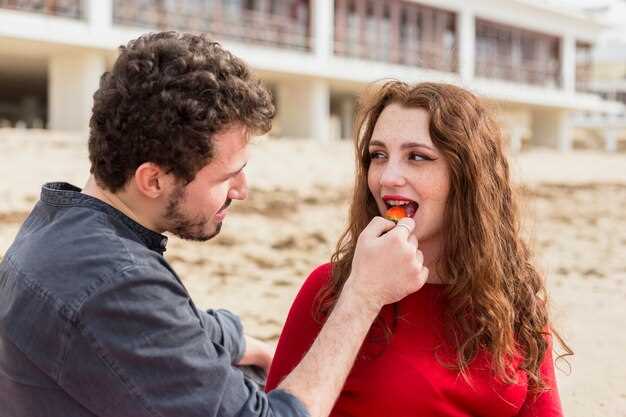
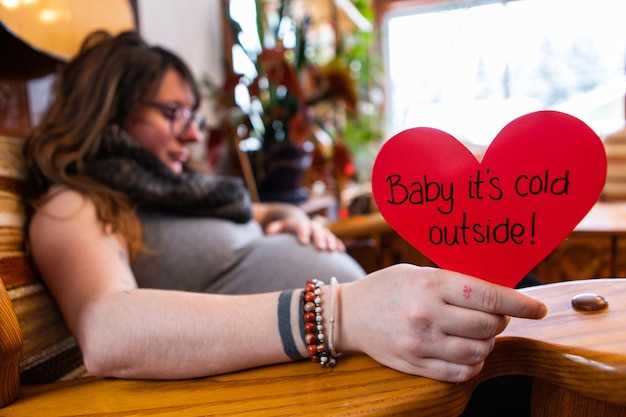
 Money Matters – Compatibilidad Financiera en las Citas — Por Qué Importa y Cómo Construirla">
Money Matters – Compatibilidad Financiera en las Citas — Por Qué Importa y Cómo Construirla">
 ¿Prefieren las mujeres a los hombres con dinero sobre la apariencia? Estudios y verdad">
¿Prefieren las mujeres a los hombres con dinero sobre la apariencia? Estudios y verdad">
 ¿Cómo Lograr Realmente que tu Pareja Cambie — Consejos Comprobados para la Relación?">
¿Cómo Lograr Realmente que tu Pareja Cambie — Consejos Comprobados para la Relación?">
 Vent or Advice – How to Transform Your Relationships">
Vent or Advice – How to Transform Your Relationships">
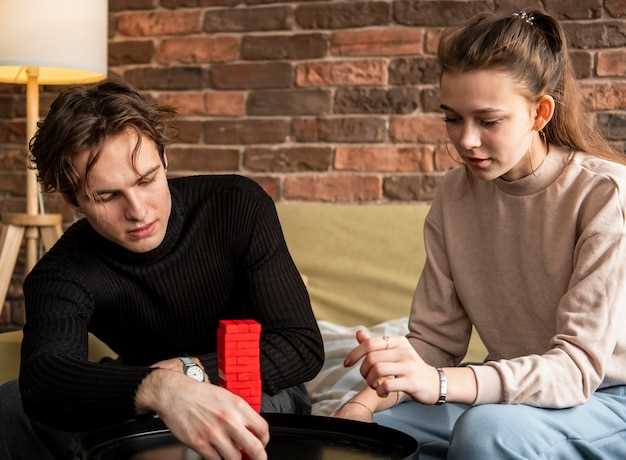 Why Do Men Play Mind Games? 9 Reasons & Ways to Cope Effectively">
Why Do Men Play Mind Games? 9 Reasons & Ways to Cope Effectively">
 We’re Here for You | 247 Customer Support & Help Center">
We’re Here for You | 247 Customer Support & Help Center">
 6 Signs You’re in a Toxic Relationship – Red Flags">
6 Signs You’re in a Toxic Relationship – Red Flags">
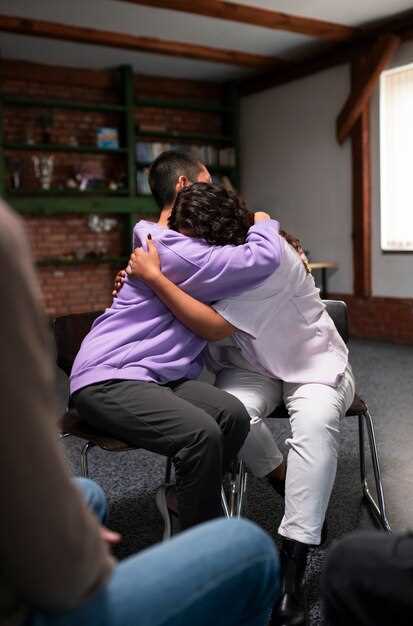 Soledad y Apoyo Social en Jóvenes Adultos Solteros vs. En Pareja">
Soledad y Apoyo Social en Jóvenes Adultos Solteros vs. En Pareja">
 Perdón – Clave para una Vida Victoriosa y un Matrimonio Feliz">
Perdón – Clave para una Vida Victoriosa y un Matrimonio Feliz">
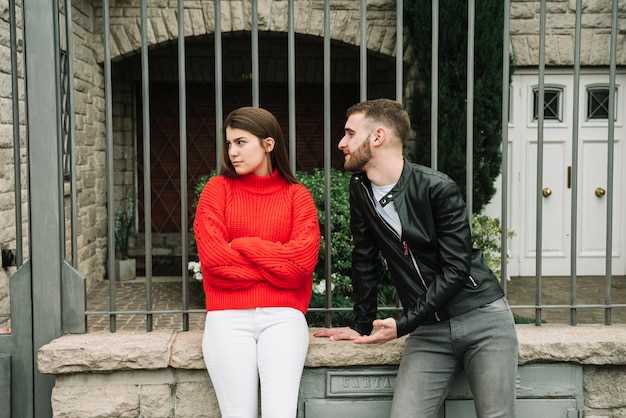 Cómo convencer a los hombres de que te vean como una persona real — Consejos de citas y respeto">
Cómo convencer a los hombres de que te vean como una persona real — Consejos de citas y respeto">